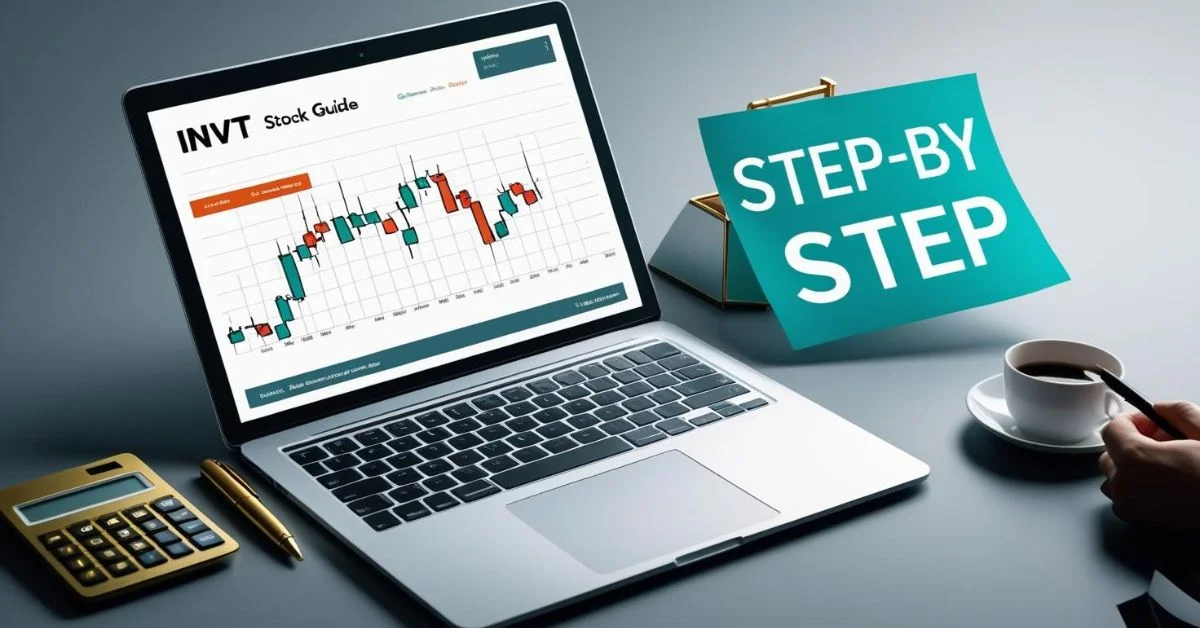INVT stock is a low-cost OTC stock that has caught the interest of many beginner investors. This guide will walk you through how it works and how to invest in it safely.
What Is INVT Stock?
1. Understanding the Company
INVT stock on the U.S. OTC market represents Inventergy Global, Inc., a company based in California that invests in and licenses intellectual property like patents. The company looks for valuable patents, buys them and then earns money by licensing them to other companies usually in technology or electronics. The business model focuses on monetizing intellectual property rights, making it different from traditional manufacturing or product-based companies.
2. Chinese INVT (Not the Focus Here)
There’s also a different INVT ticker in China, Shenzhen INVT Electric (ticker 002334.SZ), which makes inverters and energy products. However, this guide specifically focuses on the U.S.-based Inventergy Global stock, commonly referred to as INVT stock on the OTC market.
Why People Buy INVT Stock?

1. Reasons Investors Choose It
- It’s a penny stock, so its price is low and easy to buy.
- It could soar if the company licenses valuable patents or wins major cases.
- It offers a way to invest in the growth of intellectual property rights.
2. Risk Factors
With low prices come big risks: the stock is very volatile. Shares have swung from under $0.002 to as high as $0.12 in the past year. INVT stock is highly speculative, which means its performance can drastically shift based on small news events. You should only use money you can afford to lose.
Study the Company
1. Check Price History
Study the long-term and recent trends in INVT stock. Knowing its past performance helps you identify buying or selling opportunities. Currently, it trades around $0.015 per share as of mid‑2025.
2. Understand the Business Model
Inventergy makes its income by buying patents and allowing other companies to use them for a fee. It does not manufacture products but generates revenue from patent enforcement and strategic licensing agreements.
3. Review Financials
Key metrics include Return on Equity (ROE), which currently stands at a very low −1105% and revenue-to-expense ratios. The company has had periods of negative cash flow, which indicates financial instability.
4. Watch News
Track news releases for updates on patent acquisitions, lawsuits or licensing partnerships. Positive announcements can lead to a quick rise in share price.
Decide If It’s Right for You
1. Questions to Ask Yourself
- Can you handle big price swings?
- Is a high-risk, high-reward stock suitable for your portfolio?
- Do you plan to hold the stock for quick profits or keep it for future growth?
2. Risk Management
Penny stocks like INVT stock are best approached with caution. Invest a small portion typically no more than 5% of your portfolio. Always use risk-management tools like stop-loss orders.
Open a Brokerage Account
1. Where to Trade INVT
You’ll need a broker that supports OTC (Over the Counter) markets. Some of the common ones include:
- Interactive Brokers
- Charles Schwab
- Fidelity
- E*Trade
- TD Ameritrade (check OTC availability)
2. Setup Process
Opening an account typically requires submitting identification, linking your bank account and transferring funds. The process might take a few days before everything is ready.
Choose a Buying Strategy

1. Buy Now
If you’ve done your research and feel confident about the timing, a lump-sum purchase can work.
2. Dollar-Cost Averaging
This means investing small amounts over time. This approach helps smooth out price swings and can lower your average purchase price over time.
3. Limit Orders
Use limit orders to avoid paying more than expected. For volatile stocks like INVT, this is strongly recommended.
Make the Trade
1. Steps to Buy
- Log into your brokerage account.
- Search for the INVT stock ticker under OTC.
- Type in how many shares you want or how much money you’d like to invest.
- Set a limit price close to the current market price.
- Review your order and click confirm.
2. Trade Settlement
Your shares will usually settle in 2 business days. Until then, they remain pending.
Track Your Investment
1. Monitor Price Changes
Watch daily, weekly, and monthly changes in price. High volatility is typical, so regular monitoring is key.
2. Watch Company Updates
Subscribe to alerts from financial news sources, press releases and investor relations pages for updates.
3. Review Financial Data
Quarterly earnings, annual reports and SEC filings can provide insights into financial health and future potential.
Plan When to Sell
1. Set Clear Rules
- Profit goal: Sell if the price hits a target (e.g., +100%).
- Loss limit: Sell to prevent deeper losses (e.g., -50%).
- Event triggers: Sell based on news (e.g., lawsuit loss, failed patent approval).
2. Stick to the Plan
Emotional decisions can ruin gains. Always follow your pre-defined strategy.
Keep Records & Think Ahead
1. What to Track
- Transaction dates and amounts
- Prices per share
- Total profit or loss
2. Reflect on Your Investment
After selling or holding for a while, ask yourself:
- Was this the right time to buy?
- Did you follow your strategy?
- How can you improve your next trade?
Add Smart Tips
- Diversify: Never invest all your capital in one penny stock.
- Research more: Use platforms like Yahoo Finance, MarketWatch and OTCMarkets.
- Use a simulator: Practice trading with a virtual account before investing real money.
FAQs
1. What exchange trades INVT?
It trades on the U.S. OTC market (Over the Counter), not major exchanges like NYSE or NASDAQ.
2. How much does it trade for?
As of mid-2025, INVT stock trades for around $0.015 per share.
3. Why is ROE so low?
ROE is -1105% due to high expenses and low revenues, a sign of a company in financial struggle.
4. Can I trade it with big brokers?
Yes. Most major brokers that support OTC markets allow trading INVT stock.
5. What moves the stock price?
News such as new patent wins, licensing partnerships or major lawsuits.
Conclusion
If you want to invest in INVT stock the right way, first learn about the company and check its financial condition. Use a trusted broker that supports OTC stocks. Pick a smart way to buy, like investing small amounts over time. Keep an eye on your stock regularly and plan when to sell either to take profit or avoid big losses.



